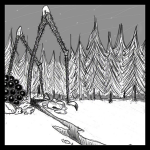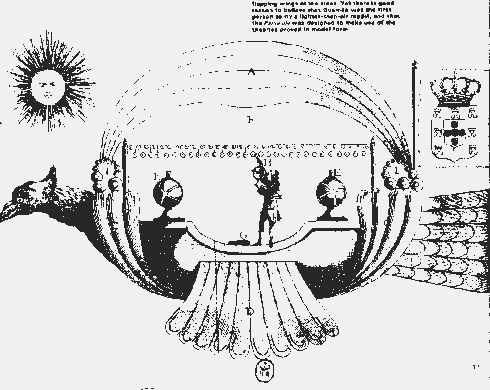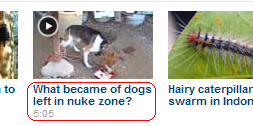Welcome to Flash Pulp, episode one hundred and fifty-two.

Tonight we present, Canine, Part 1 of 1.
[audio:http://traffic.libsyn.com/skinner/FlashPulp152.mp3]Download MP3
(RSS / iTunes)
This week’s episodes are brought to you by Mr Blog’s Tepid Ride.
Love Conrad Bain? Of course you do.
Find all of your Bain-related needs, and more, at http://bmj2k.com!
Flash Pulp is an experiment in broadcasting fresh pulp stories in the modern age – three to ten minutes of fiction brought to you Monday, Wednesday and Friday evenings.
Tonight we present an airy consideration of companionship and danger.
Flash Pulp 152 – Canine, Part 1 of 1
Written by J.R.D. Skinner
Art and Narration by Opopanax
and Audio produced by Jessica May
 The wind through the branches cast a whistling that had both man and dog on edge.
The wind through the branches cast a whistling that had both man and dog on edge.
Beside the small fire, the human gnawed at freshly singed deer-meat, occasionally throwing a scrap to the canine that lay at the fireside.
It had been a risk to delve into the wildwood alone, but the gambit had paid off, and now the challenge was in dragging back the heavy bounty.
Pulling his skins tight, the man lightened his load by another bite. The hound, its tail giving a slow wag, whimpered a request for more.
“Bah,” said the man, but, with consideration for his companion’s efforts in the chase, he tossed the mooch the now naked bone.
In response the beast lifted high its tail and let fly a wafting pungency which skirted the flames to fill the hunter’s nose.
Bedding down, the man left the dog to worry the marrow, and the long night’s watch.
* * *
The backstairs of the house, whose construction had only been completed a year previous, had already begun to show the dips and scratches of wear, and the indications of the servants’ passage had been further compounded by the nightly roaming of the bulldog generally known about the grounds as the Constable. Although it was often remarked by the lord of the manor that the Constable, like most men of the law, spent his days napping, it was little understood how seriously the animal took its nightly duties.
Not but two months into the occupation of the estate, a man of scarred visage and ill intent had come upon the south wing’s library window, scheming to wrestle it open and gain approach to the silverware displayed within.
It had been the loud, and extended, response by the Constable – who’d been at his regular patrol when he’d heard the burglar’s ham-fisted ministrations – which had denied the thief access.
This night, however, was calm. As the guardian left the recessed steps and trotted along the hall’s shadowed carpet, accompanied by the measured ticking of the grandfather clock, it determined it was a good opportunity for a brief rest.
Setting onto the plush rug, the dog’s relaxation was punctuated by the release of a brassy, gassy, note.
* * *
The woman under the crisp white duvet thrashed about in an attempt to silence Neil Young’s assessment regarding burning out or fading away, and, after a moment, her fingers finally quieted the blaring alarm clock.
The room smelled of dog fart.
“I don’t know why I put up with you,” she said to the hound, as it followed her to the washroom.
An hour’s preparation found the pair ready to leave the apartment, the animal with a bright pink ribbon in its hair, and the woman encased in a tidy suit and dark sunglasses.
They were a half-block from their destination when the rumbling began.
The beast, forgetting its generations of domestication, began to bay and howl, snapping at a threat the men and women on the streets had yet to perceive.
There was little it could do, however, to fend against the return of Kar’Wick, the Arachnid-God – still, it was some small consolation that its blind master would not see the glistening spinneret which would be their doom.
Flash Pulp is presented by http://skinner.fm, and is released under the Canadian Creative Commons Attribution-Noncommercial 2.5 License.
Text and audio commentaries can be sent to skinner@skinner.fm, or the voicemail line at (206) 338-2792 – but be aware that it may appear in the FlashCast.
– and thanks to you, for reading. If you enjoyed the story, tell your friends.







 The wind through the branches cast a whistling that had both man and dog on edge.
The wind through the branches cast a whistling that had both man and dog on edge. Speaking of what you might do for your government, I meant to post up this little nugget regarding war dogs yesterday, but got side-tracked.
Speaking of what you might do for your government, I meant to post up this little nugget regarding war dogs yesterday, but got side-tracked.

 I recently heard that Chows (AKA Chow Chows or Chowdrens), were once used to de-throat injured enemy combatants on ancient Chinese battlefields. I rather suspect this is another bit of historical urban legend, especially as I can find no reference to such brutality on the internet, but it did remind me of the somewhat more heroic real-life tasks given to Airedale Terriers.
I recently heard that Chows (AKA Chow Chows or Chowdrens), were once used to de-throat injured enemy combatants on ancient Chinese battlefields. I rather suspect this is another bit of historical urban legend, especially as I can find no reference to such brutality on the internet, but it did remind me of the somewhat more heroic real-life tasks given to Airedale Terriers.


